#CognitiveImpairment
Explore tagged Tumblr posts
Text

Innovative Alzheimer’s Treatment: High-Intensity Interval Training and Cannabidiol Synergy 🌟 --- Our recent study explores the synergistic effects of High-Intensity Interval Training (HIIT) and Cannabidiol (CBD) on combating Alzheimer's Disease (AD). Key findings include: 🔬 Biomarker Regulation: Significant modulation of apolipoprotein E (APOE), presenilin-1, and glutamate proteins, with the combined treatment showing the most profound impact. 🧠 Cognitive Enhancement: Improved memory and learning capabilities in treated rats, demonstrated through enhanced performance in the Morris Water Maze test. 💉 Amyloid Beta Reduction: Significant decrease in amyloid beta plaque accumulation, particularly effective with the combined HIIT and CBD treatment. ⚛️ Apoptosis Reduction: Lowered rates of apoptosis in hippocampal neurons, showcasing the protective effects of the combined therapy. Conclusion: The combination of HIIT and CBD shows great promise in treating cognitive impairment and reducing Alzheimer’s pathology, offering a potential therapeutic strategy for managing AD. --- 📅 Published Date: December 2024 Explore the complete study here: https://ijbms.mums.ac.ir/article_24768.html
#AlzheimersDisease#CognitiveImpairment#HIIT#Neuroscience#HealthInnovation#ScientificBreakthrough#FutureOfMedicine#ResearchLife#UniversityOfTehran#BrainHealth#Neuroprotection#ClinicalStudy#HealthScience#Cannabidiol#AmirMohammadZobeydi#highintensityintervaltraining
4 notes
·
View notes
Text
#TBISymptoms#BrainInjury#HeadTrauma#Headaches#Confusion#Dizziness#BlurredVision#LossOfConsciousness#SevereSymptoms#CognitiveImpairment#PhysicalImpairment#EarlyRecognition#MedicalAttention#Diagnosis#Treatment#Healthcare#BrainHealth#Neurology#MentalHealth#PatientCare
1 note
·
View note
Photo
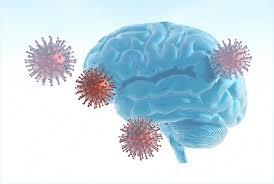
Unlocking Insights: Long COVID Cognitive Symptoms Under the Microscope | CeBoz.com
A clinical trial investigates potential therapies for brain fog and cognitive aftereffects in long COVID patients.
0 notes
Text
Unleashing the Power of Play: The Numerous Benefits of Play-Based Pediatric Occupational Therapy
As pediatric occupational therapists, we know that children learn and develop through play. Play not only allows children to have fun, but it also helps them develop the skills they need for daily activities and function. This is why play-based Occupational Therapy (OT) has become a popular approach among therapists and parents alike as it offers a range of benefits for children. Let’s dive in deeper to explore some of the key benefits of play-based OT.
1. Improves Motor Skills
Play-based OT is a great way to improve a child's motor skills, including both gross and fine motor skills. By incorporating various activities into therapy sessions, such as building blocks, playing with playdough, catching and throwing a ball, or crawling under an obstacle course, children can improve their coordination, balance, and strength. This can help them with daily activities such as dressing, feeding, and writing.
2. Enhances Cognitive Skills
Play-based OT can also help children improve their cognitive skills such as problem-solving, planning, and organization. By engaging children in activities such as puzzles, memory games, and board games, children can improve their attention, memory, and processing skills. This can help them with school-related tasks like reading, writing, and math.
3. Boosts Self-Esteem
Play-based therapy can be an excellent way to boost a child's self-esteem and confidence. By providing a safe and supportive environment where they can be creative and explore different materials and activities, children can experience success and accomplishment. This can help them feel more confident in their abilities and encourage them to try new things.
4. Facilitates Socialization
Play-based therapy sessions also offer children the opportunity to socialize and interact with others, which is an essential aspect of their development. In group sessions, for example, children can learn how to share, take turns, and collaborate with others while engaging in different activities. This can also help children improve their communication skills and develop relationships with peers.
5. Customizable to Individual Needs
Play-based therapy is customizable to each child's unique needs. Play-based sessions can be tailored to target specific skills and areas of weakness, whether it's fine motor skills, sensory processing, or social skills. This way, each child can receive a personalized approach that meets their specific needs and goals.
#pediatricoccupationaltherapy#OTforchildren#sensoryprocessing#fineandgrossmotor#handwriting#feedingtherapy#autism#developmentaldelay#cognitiveimpairment#behavioraldisorders#ADHD#learningdisabilities#earlyintervention#sensoryintegration#visualperception#socialskills#motorplanning#selfregulation#assistivetechnology#schoolbasedOT#playtherapy#therapeuticinterventions#balanceandcoordination#mentalhealth#occupationaltherapygoals
1 note
·
View note
Text
Associations between Adverse Pregnancy Outcomes and Cognitive Impairment & Dementia
Associations between Adverse Pregnancy Outcomes and Cognitive Impairment & Dementia @neosciencehub #Dementia #CognitiveImpairment # gestationaldiabetes #neosciencehub #sciencenews #healthcare
A recent systematic review and meta-analysis, featured in The Lancet Healthy Longevity, has established significant links between various adverse pregnancy outcomes and the increased risk of cognitive impairment and dementia in later life. This study consolidates findings from numerous observational studies, shedding light on the long-term neurocognitive ramifications of complications associated…
0 notes
Text
Can You Fix Your Foggy Brain After Cancer Treatment? https://copingmag.com/can-you-fix-your-foggy-brain-after-cancer-treatment/ via @coping_cancer
#brainfog #chemobrain #cognitiveimpairment #cancer
0 notes
Text
POETRY, PASTRIES & PIES PODCAST: Participatory Arts with Gary Glazner, Founder of the Alzheimer’s Poetry Project
POETRY, PASTRIES & PIES PODCAST: Participatory Arts with Gary Glazner, Founder of the Alzheimer’s Poetry Project #Dementia #CognitiveImpairment #MemoryLoss
When you hear the words dementia and Alzheimer’s Disease, how does that make you feel? Typically you associate sadness, agitation, forgetfulness, helplessness, confusion, and exhaustion with those words, especially if you have a family member or know someone who experiences these conditions. But what if you flip those emotions by turning them into joy and engaging fun? Now I know this may sound…
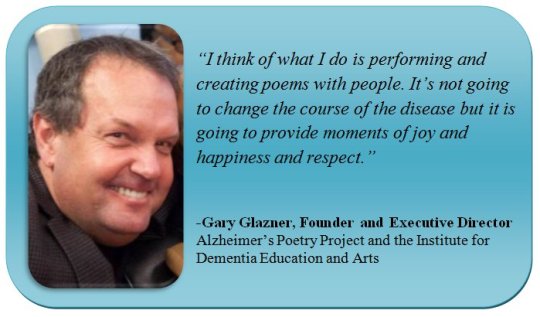
View On WordPress
#ALZHEIMER&039;S DISEASE#Cognitive Impairment#DEMENTIA#Gary Glazner#Memory Loss#Mental Health#Podcast Community#Poetry#Poetry Community#Poetry Pastries & Pies
1 note
·
View note
Photo
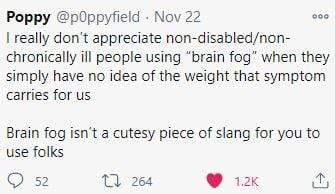
https://twitter.com/p0ppyfield/status/1330562011873374213?s=20
24 notes
·
View notes
Link
🧠 Neurobehavioral symptoms can be challenging to understand and manage. They are complex and can arise from a variety of conditions, including brain injury, neurological disorders, and mental illnesses. 🤔 It can be difficult to differentiate between neurobehavioral symptoms and other types of behavioral problems. Understanding the underlying causes is key to developing effective treatment plans. 💡 This article will explore the various types of neurobehavioral symptoms, their causes, and potential treatment options. By gaining a better understanding of these symptoms, individuals and caregivers can improve their quality of life and overall well-being.1. The Basics of Neurobehavioral Symptoms: Understanding the Brain's Response to Injury or IllnessNeurobehavioral symptoms are common after brain injury or illness. They affect how a person thinks, feels, and acts. Understanding the brain's response is key to treating these symptoms. Common neurobehavioral symptoms include depression, anxiety, irritability, and impulsivity. These symptoms can be caused by a variety of factors, including damage to the brain's structure or chemical imbalances. Neurobehavioral symptoms can also be influenced by environmental factors, such as stress or lack of sleep. Treatment for neurobehavioral symptoms may include medication, therapy, or a combination of both. It's important to work with a healthcare professional to find the best treatment plan. Medications can help regulate mood and behavior, but they may also have side effects. Therapy can help individuals learn coping strategies and improve communication skills. Support from family and friends can also play a crucial role in managing neurobehavioral symptoms. It's important to remember that recovery from neurobehavioral symptoms takes time and patience. With the right treatment and support, individuals can regain control of their lives and improve their quality of life. 🧠💪2. Common Neurobehavioral Symptoms: Identifying and Managing Changes in Behavior, Emotions, and CognitionNeurobehavioral symptoms can be challenging to identify and manage. Here are some common symptoms: Agitation Depression Anxiety Impulsivity Disinhibition Memory loss Identifying and managing these symptoms can be done through: Behavioral therapy Medication Environmental modifications Exercise and physical activity Supportive care It's important to involve the patient and their caregivers in the management plan. This ensures compliance and better outcomes. It's also important to monitor for side effects of medications and adjust the treatment plan accordingly. Managing neurobehavioral symptoms can improve quality of life for patients and their caregivers. 🌟3. Neurobehavioral Symptoms in Traumatic Brain Injury: Causes, Diagnosis, and Treatment OptionsNeurobehavioral symptoms in TBI can be caused by physical damage to the brain. Diagnosis involves a thorough evaluation of symptoms. Treatment options include medication, therapy, and lifestyle changes. 🧠 Common symptoms include irritability, aggression, depression, and anxiety. These can impact daily life and relationships. 🙁 TBI can also cause cognitive issues like memory loss and difficulty concentrating. These can be treated with cognitive rehabilitation therapy. 💻 Medications can help manage symptoms like mood swings and sleep disturbances. Therapy can also help patients and families adjust to life after TBI. 🏥 Lifestyle changes like exercise, healthy diet, and stress management can also improve symptoms. It's important to seek help from medical professionals for proper diagnosis and treatment. 💪4. Neurobehavioral Symptoms in Neurodegenerative Diseases: Recognizing and Addressing Cognitive and Behavioral ChangesNeurodegenerative diseases can cause cognitive and behavioral changes. Recognizing these symptoms is crucial for early intervention. Symptoms include depression, anxiety, apathy, and irritability. Addressing these symptoms can improve quality of life. Treatment options include medication, therapy, and lifestyle changes. 🧠💊💆♀️ Early intervention can slow the progression of neurodegenerative diseases. Caregivers should monitor for changes in behavior and cognition. Support groups can provide emotional support and practical advice. 💪👥 Cognitive changes can include memory loss, difficulty with language, and impaired judgment. Behavioral changes can include impulsivity, aggression, and social withdrawal. Treatment should be tailored to the individual's needs. 🤔😠👥 Medication can help manage symptoms such as depression and anxiety. Therapy can help with communication and coping strategies. Lifestyle changes such as exercise and a healthy diet can improve overall well-being. 💊💬🏃♀️🍎 Caregivers should also take care of their own mental and physical health. Self-care can prevent burnout and improve the quality of care provided. 💆♀️💪🧘♀️5. The Role of Neuropsychological Testing in Understanding Neurobehavioral Symptoms🧠 Neuropsychological testing helps identify cognitive and behavioral changes in individuals with neurological conditions. 📝 These tests assess memory, attention, language, and executive functioning. 🔍 They provide insight into brain-behavior relationships, aiding in diagnosis and treatment planning. 💊 Results can guide medication selection and monitor treatment effectiveness. 🌟 Neuropsychological testing also helps identify strengths to maximize functioning and improve quality of life.6. Neurobehavioral Symptoms in Children: Recognizing and Addressing Behavioral and Emotional Changes🧒 Children can experience behavioral and emotional changes due to neurological conditions. 🧠 Neurobehavioral symptoms can include anxiety, aggression, and impulsivity. 💡 Recognizing these symptoms early can lead to better outcomes. 👩⚕️ Consult with a healthcare professional for proper diagnosis and treatment. 🏫 Teachers and parents can work together to create a supportive environment for children with neurobehavioral symptoms. 🧩 Behavioral therapy and medication can be effective treatments for these symptoms. 🌟 With proper support and treatment, children with neurobehavioral symptoms can thrive.7. Strategies for Coping with Neurobehavioral Symptoms: Supportive Care and Rehabilitation TechniquesSupportive care and rehabilitation techniques can help individuals cope with neurobehavioral symptoms. Encourage a healthy lifestyle, including regular exercise and a balanced diet. Provide a structured daily routine and consistent environment. Use visual aids and reminders to help with memory and organization. Practice relaxation techniques, such as deep breathing and meditation. Encourage social support and participation in meaningful activities. Provide cognitive and behavioral therapy to address specific symptoms. Use assistive technology, such as communication devices and mobility aids. It's important to tailor supportive care and rehabilitation techniques to the individual's needs and goals. With the right strategies, individuals with neurobehavioral symptoms can improve their quality of life and achieve their full potential. 🌟 In conclusion, understanding neurobehavioral symptoms is crucial for individuals and their loved ones. Recognizing the signs and seeking professional help can lead to a better quality of life. 🧠💪 It's important to remember that neurobehavioral symptoms can be caused by a variety of factors, including brain injury, mental illness, and neurological disorders. Early intervention and treatment can make a significant difference. 🏥🩺 By educating ourselves and others about neurobehavioral symptoms, we can reduce stigma and promote understanding. Let's work together to support those who may be struggling with these symptoms and encourage them to seek help. 🤝❤️ https://symptomfinder.com/understanding-neurobehavioral-symptoms/?_unique_id=64858bf03126b
#Uncategorised#BehavioralChanges#brainfunction#cognitiveimpairment#mentalhealth#neurobehavioraldisorders#aiomatic_0
0 notes
Photo
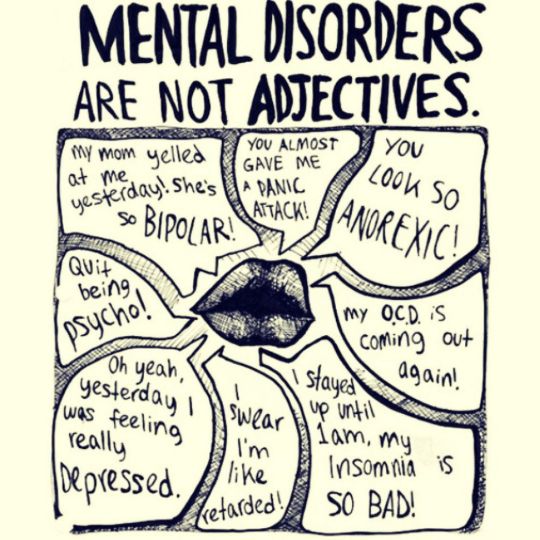
Wow❣️ What we say does matter… fight the stigma and join the conversation 😘💪🏼 #reducethestigma #fightthegoodfight #fightthestigma #fightthenoise #watchwhatyousay #chooseyourself #chooseyourwordswisely #speakyourtruth #speakyourmind #speakyourheart #powerinwords #changethenarrative #mentalillnesssupport #cognitiveimpairment #yourwordshavepower #giveyourselfabreak #peoplematter #ifightforyou #advocacy #advocacymatters #advocateforyourself #advocateforchange #changeispossible #changeiscoming #changeisconstant #steadfast #loveforothers #rachaelsroadtorecovery #mentaldisorders #mentaldisorder https://www.instagram.com/p/CW2ZhZeLADb/?utm_medium=tumblr
#reducethestigma#fightthegoodfight#fightthestigma#fightthenoise#watchwhatyousay#chooseyourself#chooseyourwordswisely#speakyourtruth#speakyourmind#speakyourheart#powerinwords#changethenarrative#mentalillnesssupport#cognitiveimpairment#yourwordshavepower#giveyourselfabreak#peoplematter#ifightforyou#advocacy#advocacymatters#advocateforyourself#advocateforchange#changeispossible#changeiscoming#changeisconstant#steadfast#loveforothers#rachaelsroadtorecovery#mentaldisorders#mentaldisorder
0 notes
Text
Untangling Life as a Millennial Caregiver with Lauren Dykovitz
#alzauthors#alzauthorspodcast#alzheimers#alzheimersblogs#alzheimersbooks#alzheimersdaughter#caregiver#caregiving#cognitiveimpairment#dementia#earlyonsetalzheimers#laurendykovitz#lifeloveandalzheimers#mariannesciucco#memory#memoryloss#millennialcaregiver#untanglingalzheimers&dementia#wholecarenetowrk#youngonsetalzheimers
0 notes
Text
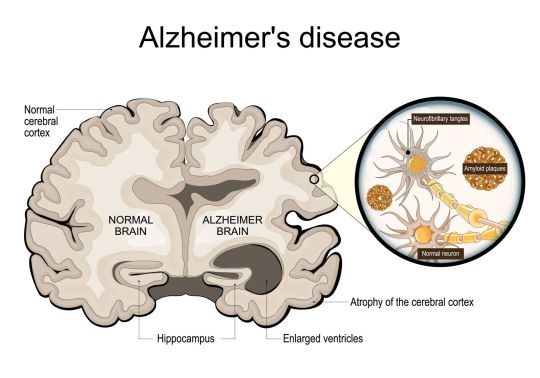
🧠 Alzheimer’s Disease 🧠 Alzheimer’s disease (AD) is a complex neurodegenerative disorder characterized by the presence of β-amyloid plaques and tau-containing neurofibrillary tangles. These pathological hallmarks disrupt synaptic homeostasis and the endosomal/lysosomal clearance pathways, leading to significant cognitive impairments. --- Pathophysiology: The intricate pathophysiology of AD involves synaptic dysfunction and failures in cellular clearance mechanisms, with β-amyloid and tau proteins playing critical roles. Risk Factors: Age is the most significant risk factor, with a higher prevalence in women due to increased life expectancy. Genetic factors, including mutations in APP, PSEN1, PSEN2, and the APOE ε4 allele, significantly elevate the risk of developing AD. Modifiable Factors: Lifestyle factors contribute to AD risk. Midlife conditions such as diabetes mellitus, hypertension, obesity, and low HDL cholesterol, along with later-life factors like physical inactivity and social isolation, play a role. Research and Diagnosis: Advancements in biomarkers, such as cerebrospinal fluid (CSF) analysis and PET imaging for Aβ and tau, have revolutionized our understanding and diagnosis of AD. These tools help differentiate AD from other neurodegenerative disorders and cerebrovascular conditions, enabling more targeted treatment approaches. Therapeutic Challenges: Despite substantial research, effective therapeutic targets within this complex disease remain elusive. Further studies are essential to develop interventions that can significantly alter the clinical course of AD. Notably, emerging studies suggest that dietary supplements, such as cannabidiol (CBD), and regular exercise may offer promising benefits in managing AD by reducing amyloid-beta accumulation, decreasing inflammation, and enhancing overall brain health. --- I am excited to announce that my recent article titled "High-Intensity Interval Training Combined with Cannabidiol Supplementation Improves Cognitive Impairment by Regulating the Expression of Apolipoprotein E, Presenilin-1, and Glutamate Proteins in a Rat Model of Amyloid β-Induced Alzheimer’s Disease" has been published and will soon be shared. Stay tuned for more insights and breakthroughs in the fight against Alzheimer's. --- Knopman, D.S., Amieva, H., Petersen, R.C., et al. Alzheimer’s disease. Nat Rev Dis Primers 7, 33 (2021). https://doi.org/10.1038/s41572-021-00269-y
---
#AlzheimersDisease#Neurodegeneration#CognitiveImpairment#Genetics#MedicalResearch#HealthcareInnovation#Pathophysiology#AmirMohammadZobeydi#Amir_Mohammad_Zobeydi#Aging
1 note
·
View note
Text
Amyloid and Tau Biomarkers Help Distinguish Alzheimer's from Other Forms of Mild Cognitive Impairment
MedicalResearch.com Interview with:

Lauren McCollum, MD Cognitive and Behavioral Neurology Fellow Penn Memory Center / Cognitive Neurology Division MedicalResearch.com: What is the background for this study? Response: Alzheimer’s Disease (AD) is a heterogenous condition, with considerable variability in cognitive symptoms and progression rates. One major reason for this heterogeneity is “mixed pathology,” – i.e., both AD- and non-AD pathology. Examples of non-AD pathology include cerebrovascular disease (CVD), Lewy Bodies, and TDP-43. Pathologically, Alzheimer’s Disease is defined by characteristic amyloid plaques and neurofibrillary tangles, which can be assessed for in living patients with CSF- or PET-based biomarkers for amyloid and tau, respectively. Classically, amyloid deposition begins years or even decades before pathologic tau accumulation, which is in turn associated with brain atrophy and cognitive decline. The recently developed NIA-AA “ATN” research framework allows for the classification of individuals with regard to 3 binary biomarkers: Amyloid (A), Tau (T), and Neurodegeneration (N). An individual’s ATN biomarker status indicates where along the “Alzheimer’s Disease continuum” they lie. Additionally, some ATN statuses are on the “typical AD” continuum, while others are not. Research has shown that 15-30% of cognitively normal older adults have elevated amyloid. It stands to reason that some portion of cognitively impaired individuals with elevated amyloid and neurodegeneration have something other than AD driving their neuronal injury. Within the context of the ATN research framework, this subset of people is the A+T-N+ group (i.e., people who have elevated amyloid and neurodegeneration, but are tau-negative), as amyloid alone (that is, amyloid without tau) is not thought to cause significant cognitive impairment or brain atrophy. Our hypothesis was that, compared to A+T+N+ (a set of typical-AD biomarkers), A+T-N+ have cognitive and neuroimaging profiles that deviate from a typical Alzheimer’s Disease pattern – i.e., with less memory loss and less atrophy in AD-signature regions – and may have biomarkers suggestive of alternate non-AD pathologies . MedicalResearch.com: What are the main findings? Response: We performed two analyses using data from the Alzheimer’s Disease Neuroimaging Initiative (ADNI). The first analysis used a PET-based approach to compare amyloid-positive people with mild cognitive impairment (MCI) or AD based on tau status (i.e., A+T- vs A+T+). Amyloid status was determined based on a composite SUVR of 1.11 with florbetapir PET. Tau status was assessed using the tau PET tracer AV-1451, and a cut-off of 1.22 SUVR in the bilateral extrahippocampal mesial temporal lobes was determined based on analysis of amyloid-negative cognitively normal controls. 13 A+T- and 30 A+T+ individuals were identified and compared. (In this analysis, cognitive impairment was used as a proxy for neurodegeneration as the sample size was small.) The main findings in this analysis were that verbal memory was less impaired in A+T- compared to A+T+ (5-minute delayed recall score 5.3 vs 2.7, p=0.024), while the groups were similarly impaired on executive function as assessed by Trails B time (146 vs 131 seconds, p=0.628). In a second, larger analysis, amyloid and tau positivity were determined based on CSF using cut-off values for the Roche Elecsys platform (A-beta-4224), and the neurodegeneration cut-off was set at the 90th percentile for mean ICV-and-age-adjusted hippocampal volume of 113 amyloid-positive individuals with dementia-level impairment. 29 A+T-N+ MCI, 87 A+T+N+ MCI, and 165 amyloid-negative cognitively normal controls were compared. The cognitive findings were similar to the first analysis, with A+T-N+ having less severe memory impairment compared to A+T+N+ (30-minute delayed recall score of 3.2 vs 1.6, p=0.004) and similar impairment in other domains, including executive function (Trails B time of 126 vs 124 seconds, p=0.899). Additionally, A+T-N+ had less severe posterior hippocampal atrophy compared to A+T+N+, and both MCI groups had similarly substantial burdens of WMHs. MedicalResearch.com: What should readers take away from your report? Response: Compared to the typical-AD biomarkers groups, both A+T- MCI/AD (from the first analysis) and A+T-N+ MCI (from the second analysis) displayed relative sparing of memory compared to executive functioning. Relative posterior hippocampal sparing in A+T-N+ MCI compared to A+T+N+ MCI may suggest non-AD pathology, as along the “hippocampal longitudinal axis” AD pathology (specifically, tau) preferentially affects the posterior hippocampus (while still involving the whole axis) and suspected TDP-43-opathies preferentially affect the anterior hippocampus.Both MCI groups had greater WMH burden than controls, suggesting CVD may contribute to symptoms in both. Taken together, symptomatic patients who have elevated amyloid but not tau had features suggestive of alternative non-Alzheimer’s disease pathologies, including a less “Alzheimer’s-like” cognitive profile (i.e., with less memory loss), abnormal burden of WMHs, and relative sparing of the posterior hippocampus. MedicalResearch.com: What recommendations do you have for future research as a result of this work? Response: Future directions for this research will include cortical thickness analyses to assess for additional neuroimaging correlates of these distinct cognitive profiles. We will also be further assessing our hypothesis with longitudinal analyses. Any disclosures? I (Dr. McCollum) have no disclosures. Dr. Wolk has received personal compensation for consulting, serving on a scientific advisory board, speaking, or other activities with Merck, Jannsen, Eli Lilly and GE.
AAN 2019 abstract:
Cognitive Profiles in Amyloid-Positive Mild Cognitive Impairment and Alzheimer’s Disease with and without Tau (P2.1-030) Lauren McCollum, Laura Wisse, Sandhitsu Das, Robin de Flores, Paul Yushkevich, David Wolk First published April 9, 2019, https://n.neurology.org/content/92/15_Supplement/P2.1-030# The information on MedicalResearch.com is provided for educational purposes only, and is in no way intended to diagnose, cure, or treat any medical or other condition. Always seek the advice of your physician or other qualified health and ask your doctor any questions you may have regarding a medical condition. In addition to all other limitations and disclaimers in this agreement, service provider and its third party providers disclaim any liability or loss in connection with the content provided on this website. Read the full article
0 notes
Text
Exercise for Better Sleep
Exercise is excellent for our body and mind and it can also help us get a good night’s sleep.
There is evidence that exercise does help you fall asleep more quickly and improves sleep quality, based on existing studies, but there’s some debate as to what time of day you should exercise.
How exercise helps us sleep
The research doesn't fully explain how physical activity improves sleep and some studies conclude that we may never be able to establish the mechanism that explains how the two are related.
However, we do know that moderate aerobic exercise increases the amount of slow wave sleep you get. Slow wave sleep refers to deep sleep, where the brain and body have a chance to rejuvenate. Exercise can also help to stabilise your mood and decompress the mind.
Why the timing of exercise matters?
Some people may find that exercising close to bedtime seems to keep them up at night.
Aerobic exercise causes the body to release endorphins. These chemicals can create a level of activity in the brain that keeps some people awake. If you experience this, you should exercise at least 1 to 2 hours before going to bed, giving endorphin levels time to reduce and the brain time to 'wind down'.
Exercise raises your core body temperature. The effect of exercise in some people is like taking a hot shower that wakes you up in the morning and this elevation in core body temperature signals the body clock that it’s time to be awake. But after about 30 to 90 minutes, the core body temperature starts to fall and this fall helps to facilitate sleepiness.
Despite these biological responses to exercise, other people find that the time of day they exercise doesn’t make a difference and whether it’s in the early morning or close to bedtime, they’ll see a benefit to their sleep.
How Much Exercise Do You Need for Better Sleep?
The good news is people who participate in at least 30 minutes of moderate aerobic exercise may see a difference in sleep quality that same night.
So, while we should all be encouraged to exercise, just be mindful of timing and whether it seems to affect your ability to get optimal sleep quality. You know your body the best.
Source: https://www.hopkinsmedicine.org
For more inspirational, life-changing blogs, please check out my site https://www.thecpdiary.com
#thecpdiary#blog#Exercising#for#BetterHealth#BetterImmunity#SleepingPatterns#SleepHabits#QualitySleep#BetterMentalHealth#BetterMemory#CognitiveImpairments#SleepHealth
0 notes
Photo

#cognitiveimpairment #shorttermmemoryissues #brainfog #vestibulardisorder #superiorcanaldehiscence #topamax #ptsdsucks #ptsd #migrainedisorder #vertigosucks #dizzy #stillfighting #domesticwintersoldier #fullmetalblunt #credittoartist #mybrainishangingupsidedown #motivation
#brainfog#cognitiveimpairment#credittoartist#dizzy#domesticwintersoldier#fullmetalblunt#migrainedisorder#Motivation#mybrainishangingupsidedown#ptsd#ptsdsucks#shorttermmemoryissues#stillfighting#superiorcanaldehiscence#topamax#vertigosucks#vestibulardisorder
0 notes